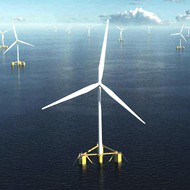Sustainable water: The public weighs in on Cambria's emergency water supply facility
By Karen Garcia[
{
"name": "Promo Temp Targeted",
"id": "PromoTempTargeted",
"class": "inlineCenter",
"insertPoint": "4",
"component": "15511697",
"requiredCountToDisplay": "0"
},
{
"name": "Ad - Medium Rectangle CC01 - 300x250 - Inline Content",
"class": "inlineCenter",
"insertPoint": "8",
"component": "15582119",
"requiredCountToDisplay": "12"
},{
"name": "Ad - Medium Rectangle LC01 - 300x250 - Inline Content",
"class": "inlineCenter",
"insertPoint": "18",
"component": "15582122",
"requiredCountToDisplay": "22"
},{
"name": "Ad - Medium Rectangle 9 - 300x250 - Inline Content",
"class": "inlineCenter",
"insertPoint": "28",
"component": "15582121",
"requiredCountToDisplay": "32"
}]
State agencies and the Cambria community are questioning the long-term sustainability of an emergency water supply facility that’s pumped out water since January 2015. Why now? That answer’s a little complicated, but here’s the “quick” version.
The Cambria Community Services District (CCSD) originally proposed the water treatment facility as a supplemental water source after declaring a water supply emergency in 2014. SLO County granted the CCSD an emergency permit for the Cambria Emergency Water Supply Project to provide water to the community if the CCSD’s wells could not. Because of Cambria’s water supply situation, the project fell under a provision in Gov. Jerry Brown’s emergency drought proclamation, which made it possible to get out of the normal environmental review process (it usually comes before project approval, facility construction, and operation).
Under the facility’s current emergency permit, the CCSD needs to apply for a permanent permit to continue running the facility—now rebranded as the Cambria Sustainable Water Facility—as a long-term water supply for the community. In order to apply for this specific permit, the project had to eventually go through the review process, and a draft environmental impact report (EIR) was released in August.
The CCSD received 210 comment letters from the public and government agencies in response. The California Coastal Commission and the Department of Fish and Wildlife responded to the report by detailing inaccuracies, calling for clarification, and noting that information was missing.
The California Coastal Commission summarized its lengthy concerns into three main points: The San Simeon Watershed utilized by the treatment facility doesn’t appear to have enough water available for the proposed project. The project will have significant impacts on habitat and biological resources that the EIR did not adequately analyze. New growth anticipated by the proposed project wouldn’t be supported by the water available in the San Simeon Watershed and hasn’t been fully analyzed in the EIR.
“We strongly recommend the CCSD substantially revise the EIR as described above to ensure the adverse environmental impacts of the existing and proposed projects are fully analyzed, that project alternatives are adequately evaluated and that the project’s cumulative effects are assessed,” the Coastal Commission stated in its letter.
Although the Central Coast Regional Water Quality Control Board submitted a comment letter asking for more analysis on estimated water usage, the board didn’t mention whether it believed there would be enough water to sustain the community in the long run.
Jon Rokke from the regional water board said the department looks at how the water will be obtained and filtered—the facility pulls brackish water out of the San Simeon Creek Aquifer and treats it through reverse osmosis. By looking at the information provided by the EIR, Rokke said the proposed project makes sense for the Cambria community. He doesn’t see anything out of the ordinary with the project, but he did point out that its process was unique.
“This is the only project that I’m aware of that was permitted under the governor’s emergency drought proclamation, which allowed them to sidestep the normal environmental review process,” he said.
Judging by the comment letters that the CCSD received, Rokke said his overall impression is that the process of creating an EIR with modifications and going forward with a permanent water facility is going to take a while, but there isn’t a timeline to work toward.
Another project that fell under the governor’s emergency water proclamation is the East Porterville Water Supply Project in Tulare County. Similar to the Cambria project, this community also needed a reliable source of water. The difference between these two projects is that private wells in East Porterville went completely dry amid the drought, and more than 1,000 households lost access to water. In Cambria, while the CCSD’s well levels were low and no residents ran out of water, well level tests predicted the community could potentially run out of water in the future.
The Department of Fish and Wildlife’s main concern with the Cambria project is its impact on steelhead, which are listed as threatened under the Federal Endangered Species Act.
Steve Gonzalez, the department’s public information officer, wrote in an email to New Times that Fish and Wildlife’s comments on the EIR are intended as recommendations for what the CCSD should consider, such as impacts on wildlife that weren’t fully discussed.
CCSD General Manager Jerry Gruber responded to New Times’ via email, saying that neither he nor the CCSD staff will be addressing concerns outside of the review process. He did say that staff will be working with the Michael Baker International consulting firm to respond to the EIR comments they have received.
The project has been controversial since its beginnings in 2014, when the CCSD declared a water shortage based on the projection of future water loss. Within that same year, the CCSD was granted an emergency permit by SLO County and it qualified for a $4.38 million grant from the Department of Water Resources to provide partial funding for the project. The project was completed in November 2014.
In August 2015 the state withheld the grant because the CCSD did not have a complete groundwater management plan. The CCSD submitted its plan in November and the following month received $4.16 million from the state. The state is still withholding 5 percent of the grant until the project completes the EIR process, makes the appropriate changes, and obtains a permanent permit from the county.
Staff Writer Karen Garcia can be reached at [email protected].
Latest in News
Readers also liked…
-

SLO police identify alleged driver who hit and killed couple
Dec 22, 2022 -

When the levee breaks: Oceano residents, county officials walk a tightrope of regulations to manage Arroyo Grande Creek, which some say led to the levee's failure in January
May 18, 2023 -

Cal Poly report highlights offshore wind's potential to spur green energy transition
Jun 8, 2023








